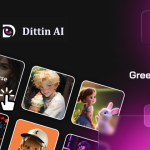

The AI model, known as the 3D Foundational Model, understands various prompts such as text, image, video, or even 3D models. Users can drop in an existing 3D game asset and request the AI to create something similar, modify it, or expand upon it.
Users can also modify scenes and elements like time of day or landscape structure. Roblox claims that this AI model will drastically reduce the time it takes to create game environments and empower developers with minimal 3D art skills to craft more compelling and immersive experiences.
The system also utilizes “tokenized” 3D blocks, treating them as numerical units. This allows the AI model to predict the most likely next structural 3D element in a sequence. However, training the AI model for 3D environments presents unique challenges.
“Finding high-quality 3D information is difficult,” Anupam Singh, vice president of AI and growth engineering at Roblox, explained. “Even if you get all the data sets that you would think of, being able to predict the next cube requires it to have literally three dimensions, X, Y, and Z.”
To address this, Roblox employed a second AI model that checks the work of the first model, ensuring logical consistency in the generated content.
Roblox has also been transparent with their training resources, with the model being trained on 3D data provided by Roblox creators who have opted in, alongside open-source and licensed datasets.
However, the introduction of generative AI tools in game design sparks ethical considerations and challenges. The discourse surrounding generative AI in video games already exists, with many arguing that these tools may lead to job displacement for traditional game industry workers, such as environment artists, voice actors, animators, and character designers.
However, Roblox emphasizes that human game designers will still play a crucial role in crafting enjoyable game environments. AI-generated content will likely still require developers to fine-tune and modify it. Roblox recognizes that the creative process cannot be fully replaced by AI but believes that the model will empower more people to develop and create games.
“We see a powerful future where Roblox experiences will have extensive generative AI capabilities to power real-time creation integrated with gameplay,” Roblox stated. “We’ll provide these capabilities in a resource-efficient way, so we can make them available to everyone on the platform.”
Speaking of efficiency, Roblox is reportedly making technical improvements to its game engine, Harmony. The engine is being optimized for devices with low-end CPU, GPU, and RAM for faster game loading times and improved performance on devices like smartphones.
“Superior performance also empowers creators to experiment with bigger, bolder ideas that push the boundaries of what exists on the platform, from larger maps to servers with more players,” Tian Lim, Roblox VP of creator and engine product, said. The company stated that in the future, their game should be able to run complex world scenes on just a smartphone with 2GB of RAM.
Overall, the introduction of the 3D Foundational Model is part of Roblox’s broader strategy to integrate AI across its platform. Currently, the company utilizes over 250 AI models, including one that monitors voice chat in real-time for content moderation.



![Best AI Dating Apps for [current_date format=Y]: Top AI Chatbots & Romance Tools 4 AI dating apps](https://www.greenbot.com/wp-content/uploads/2025/03/AI-dating-apps-150x150.png)















